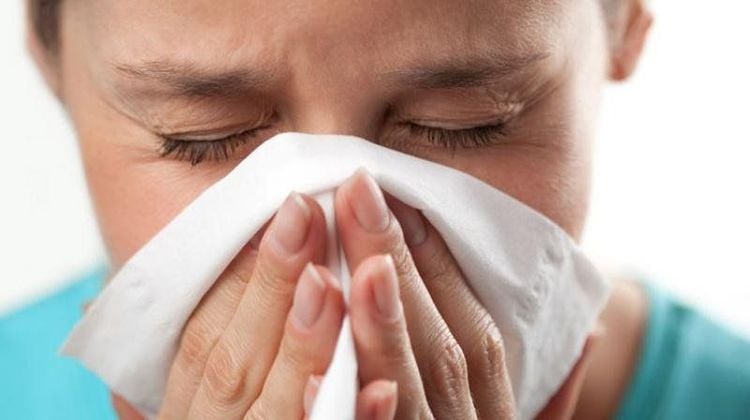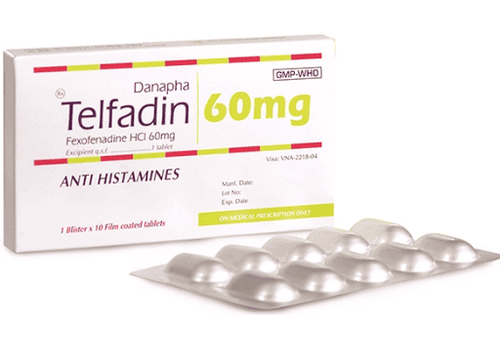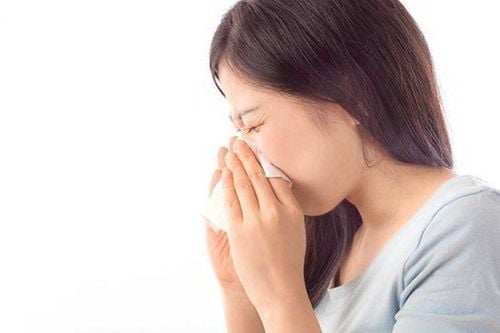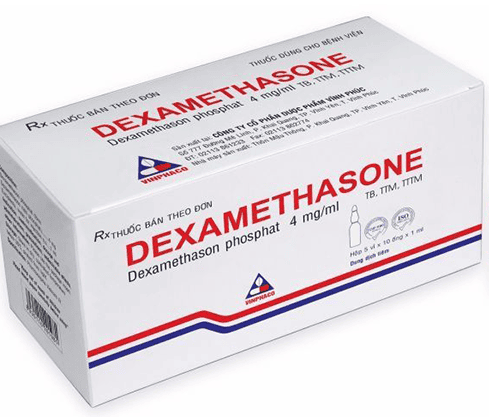This is an automatically translated article.
The article was written by Consultant, Associate Professor, Dr. Phan Quang Doan - Allergy-clinical immunologist - Department of General Internal Medicine - Vinmec Times City International General Hospital.1. Allergic Rhinitis is an inflammatory disease of the nasal mucosa caused by contact with respiratory pathogens - The disease is characterized by symptoms: sneezing, runny nose, stuffy nose, itchy nose.
The disease has an allergic mechanism and due to many causes, the prevalence of this disease in the community is increasing in our country and around the world (from 10-25%).
VM is a benign disease but sometimes seriously affects the quality of life. Patients often have headaches, insomnia, which reduces concentration in studying and working. Social communication is also limited or inferiority can lead to depression due to frequent sneezing, runny nose, even eating is uncomfortable because of these symptoms. The patient's income is also reduced due to reduced labor productivity, sick leave and medical expenses.
>>> Is allergic rhinitis different from common rhinitis? Effective treatment

Người bệnh viêm mũi dị ứng có nguy cơ mắc hen phế quản cao gấp 3-4 lần người bình thường
The most common causes are house dust, pollen, feathers, industrial dust mainly cotton dust, molds, etc. Among the above causes, house dust and pollen are the main causes of BV. .

Nguyên nhân hay gặp nhất là bụi nhà, phấn hoa, lông vũ, bụi công nghiệp chủ yếu là bụi bông, các loại nấm mốc
Molds, cockroaches, cotton dust, wool, library dust, etc. also cause VAP all year round.
Pollen-induced DM can be considered as a homogeneous form of allergy with the following characteristics:
Occurs in young, atopic individuals, usually spontaneously resolves by the age of 50. There is a history Family allergies. Symptoms of BV occur with a distinct pollen season, the trio of sneezing, runny nose, and itchy nose always appear, the worst in the evening before going to bed and when waking up in the morning. Often accompanied by conjunctivitis or bronchial asthma. There are many types of pollen that can cause VTE: roses, milkweed, orchids. In foreign countries, grass pollen, grass pollen, Ambrosia, these flowers must be small in size, with a large amount of pollen, and pollinated by the wind to be able to cause VTE.
Sources of pollen allergens depend on the type of tree, cultivated flower, wildflower and geographical area. If only responding to one type of pollen, plants, the end of the season will return to normal, that is seasonal VM. If you are allergic to many flowers, symptoms may appear year-round.
In addition to the above-mentioned causes, the symptoms of GERD may appear to increase when there is a northeast monsoon, changes in weather, humidity, the most difficult types are cigarette smoke, coal smoke, etc.














